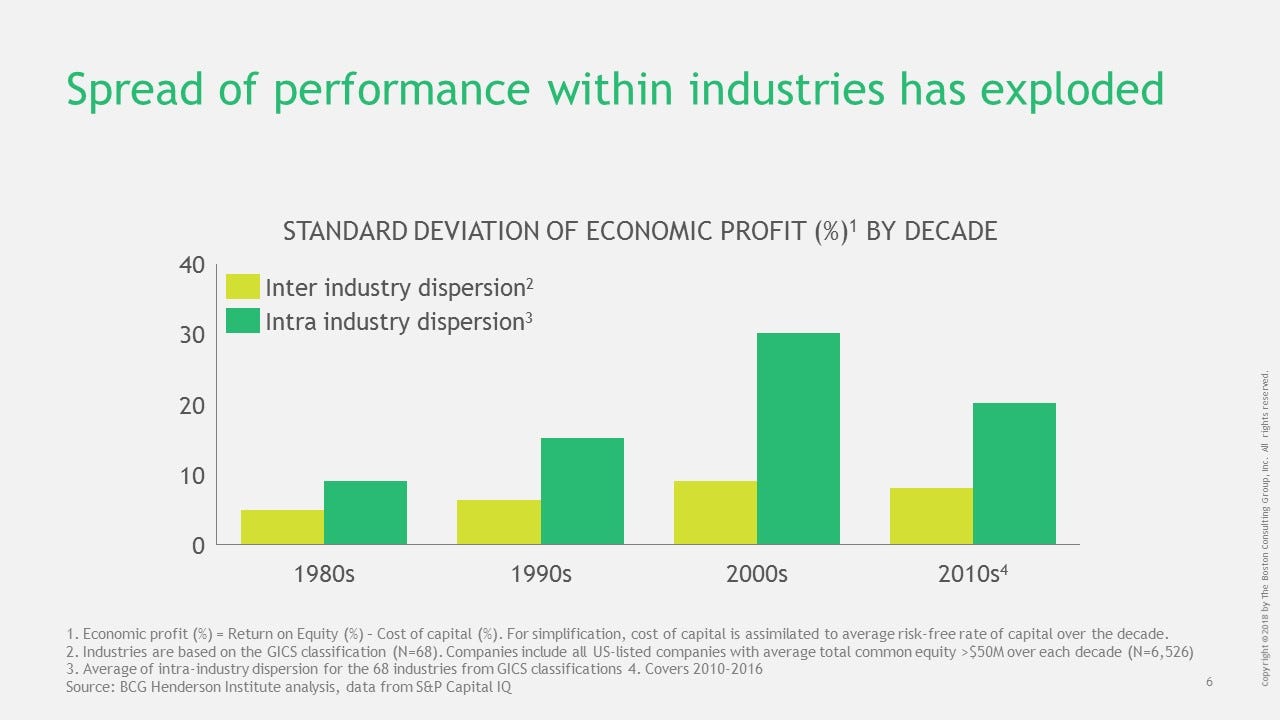Costumo usar esta figura para ilustrar a evolução que acredito ter acontecido desde meados do século XX até aos nossos dias.
O século XX valorizava a uniformização para tirar partido da vantagem da escala. Assim, basicamente havia uma estratégia única para o sucesso, crescer mais depressa que os outros e via escala e eficiência conquistar os clientes e aumentar a quota de mercado. Mongo, terra de tribos apaixonadas, permite a coexistência de cada vez mais estratégias. Recordar McArthur:
Esta narrativa pode ser traduzida numericamente a:
"Corporate strategy is increasingly challenging for today’s leaders. Business environments are becoming more and more varied, which requires companies to actively choose strategic approaches that match their own specific situations. External forces such as political pressures, social expectations and macroeconomic circumstances are having greater impacts, adding to the complexity of strategy. And the increasing pace of change means that strategic assumptions must be re-evaluated constantly.
At the same time, corporate strategy is also becoming more important. With aggregate growth trending downward globally and new competitors presenting a constant threat of disruption, companies can no longer count on merely extending and exploiting historical strategies over the long term. This means that strategy has become a more important source of differentiation between firms: Within a given industry, the average dispersion of performance has doubled since the 1980s."
Trecho e imagens retirados de "The Board’s Role in Strategy in a Changing Environment"






















